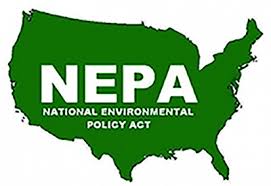The Gulf Coast Ecosystem Restoration Council’s “Draft Comprehensive Plan for Restoring the Gulf Coast’s Ecosystem and Economy” does not actually include any restoration projects.
Everyone knows that life is just a little bit slower in the South; as it turns out, so is ecosystem restoration.

On this date three years ago, you likely were continuing to monitor distressing television footage of the Deepwater Horizon/BP oil disaster in the Gulf of Mexico, wondering if the millions of barrels of oil gushing out of the Macondo Well would ever stop. A headline from the June 3, 2010 edition of the New York Times read Plan for Relief Wells Spurs Hope amid Caution. You may recall this as the time period during which engineers attempted a variety of oddly-named techniques to stop the flow of oil from the wellhead such as the “Top Kill” and “Junk Shot.” Oil ultimately flowed into the Gulf for 87 days from late April to mid-July 2010, when engineers finally capped the well.
If you thought it took too long to cap the well, wait until you hear how long it is taking us to get started on Gulf Coast restoration. Three years after the largest offshore oil spill in history, the restoration process is still in its early stages, as is the litigation process. (In earlier posts here, and here, I discussed various aspects of the ongoing post-spill legal processes.) For instance, about two years ago, BP committed $1 billion to early restoration projects in the Gulf. As of May 2013, only 7 percent of the funds had been committed to projects, and of the few projects proposed, a large number are focused on lost recreational use rather than environmental restoration. And this is the “early” phase of restoration, folks.
Following this trend of lackluster progress, on May 23, 2013, the Gulf Coast Ecosystem Restoration Council released its Draft Initial Comprehensive Plan for Restoring the Gulf Coast’s Ecosystem and Economy. The Draft Plan describes (sort of) how the Council will allocate a portion of the Clean Water Act penalties related to the oil spill to projects that revitalize the Gulf Coast economy and ecosystems. Yet, oddly, the Draft Plan does not actually contain any restoration projects or any details about funding.
Curiously, some media outlets have hailed the Draft Plan release as “mark[ing] significant progress” in Gulf restoration. In contrast, in a Washington Post op-ed today, Bob Graham and William K. Reilly, the former co-Chairs of the National Commission on the Deepwater Horizon Oil Spill and Offshore Drilling, expressed their frustration with the slow pace of restoration, lamenting the fact that “[t]he goal of restoring the gulf’s environment has become lost amid bureaucratic squabbling.”
Below is an analysis of the content that is in the Draft Plan, following some quick background on the Restoration Council process. The Draft Plan is open for public comment until June 24, 2013. The Council expects to release a Final Plan later this summer.
Clean Water Act Penalties & The RESTORE Act. Under the Clean Water Act (CWA), entities that discharge oil into U.S. waters in violation of the Act’s discharge requirements face civil and administrative penalties. The United States has filed a lawsuit seeking CWA penalties from the parties responsible for the Deepwater Horizon oil spill, but the ultimate amount of penalties and the timing of their payment are still unknown. The United States has settled with Transocean Deepwater Inc. and related entities, and already has collected a portion of penalties pursuant to that settlement.
In July 2012, President Obama signed the “Resources and Ecosystem Sustainability, Tourist Opportunities, and Revived Economies of the Gulf Coast States Act of 2012,” commonly known as The RESTORE Act. The RESTORE Act:
- created a Trust Fund to hold 80 percent of any civil and administrative penalties paid to the United States under the Clean Water Act (CWA) by the parties responsible for the Deepwater Horizon/BP Oil Spill;
- established an intergovernmental Ecosystem Restoration Council to identify restoration and recovery projects eligible for funding; and
- set forth a formula for how the money would be divided between the five Gulf States (Florida, Alabama, Mississippi, Louisiana, and Texas), the Restoration Council, and regional research and monitoring programs.
It is important to note that The RESTORE Act is unprecedented; historically, all CWA civil penalties have been deposited into the Oil Spill Liability Trust Fund to be used for cleaning up future oil spills. The CWA penalties are meant to serve as punishment for violators like BP—not as reparations. Through a separate, ongoing legal process called the Natural Resources Damage Assessment (NRDA) process, the parties responsible for the oil spill will compensate the public for injuries to natural resources and restore the Gulf’s natural resources to the condition they would have been in but for the oil spill. Note that additional funds are available for Gulf Coast recovery and restoration through Transocean and BP criminal plea agreements with the United States.
The Restoration Council. The Restoration Council has eleven federal and state members, including the Governors of the Gulf states, the EPA Administrator, and several Cabinet-level officials. The Restoration Council is in charge of administering 30 percent of CWA penalties (plus interest) associated with the BP oil disaster. The RESTORE Act tasks the Restoration Council with the responsibility of developing a science-based “Comprehensive Plan,” a ten-year funding plan for Gulf ecosystem restoration and protection projects. Specifically, the Comprehensive Plan should include “projects and programs . . . that would restore and protect the natural resources, ecosystems, fisheries, marine and wildlife habitats, beaches, coastal wetlands, and economy of the Gulf Coast.” The projects can address the long-term degradation of Gulf Coast resources as well as oil spill impacts. The Council also is tasked with reviewing and approving state funding plans (“State Implementation Plans”) to ensure they complement the Comprehensive Plan.
The Draft Comprehensive Plan
The Draft Plan does not include any project proposals, only evaluation criteria. The RESTORE Act requires the Restoration Council to include in its Comprehensive Plan a description of funding allocations for the next ten years (“Ten-Year Funding Strategy”) and a list of priority projects the Council will fund over the next three years (“Funded Priorities List”). This Draft Plan, however, does not contain any specific project proposals. Let me repeat: the Draft Comprehensive Plan for Restoring the Gulf Coast’s Ecosystem does not include any ecosystem restoration projects. The Draft Plan essentially is a framework for a future Plan; it’s a Plan plan. The Council asserts it did not include the Ten-Year Funding Strategy or Funded Priorities List in this Draft because of uncertainty about the amount and timing of penalty collection, and because the Treasury Department has not yet drafted procedures to guide Trust Fund expenditures. Additionally, the Council notes that the Gulf states have not yet developed their State Implementation Plans, and the Council otherwise has not yet received public feedback on its Draft Plan.
In the background, recent reports indicate that federal agencies are squabbling over how to manage the RESTORE funds and states are arguing both about how the money should be allocated between them and how it should be spent. Reportedly (and unsurprisingly), some state and local officials are more interested in things like coastal convention centers and state budgets than things like wetland restoration and species enhancement.
Prior to this point, commentators had wondered how the Restoration Council would be able to select projects and draft a funding plan by the required deadline without knowing how much money might be available to them and when. This Draft Plan answers that question—the Restoration Council is passing the buck for the meantime. It appears from the language of the Draft Plan that the ongoing litigation is a critical factor holding up project selections. Additionally, only Louisiana and Florida have existing restoration project proposals from which the Council can draw. The fact that the Draft Plan contains no projects also means that we must wait to see how the Comprehensive Plan will coordinate with the other ongoing Gulf restoration efforts, such as NRDA and supplemental environmental projects (SEPs) associated with settlement agreements.
The Draft Plan does include “Goals,” “Objectives,” and “Evaluation Criteria.” What the Draft Plan lacks in project proposals, it makes up for in vagueness and ambiguity about how the Council will select projects. The Draft Plan lays out three sets of guiding principles adopted by the Council: “Goals,” “Objectives,” and “Evaluation Criteria.” It is not entirely clear how these three categories will interact in practice, and the Council suggests that the categories will be amended over time. The Draft Plan broadly states that:
The Council will use the Goals, Objectives, and Evaluation Criteria . . . to guide its ecosystem restoration funding decisions. The Goals provide the Council’s desired long-term outcomes for Gulf Coast restoration; the Objectives outline the broad types of activities that are expected to achieve the Goals and will be refined over time to be more specific and measureable [sic] as more information is known about the ultimate amount and availability of funding.”
Goals. The Restoration Council has adopted five goals to guide development of the Draft Plan. One of these goals is to “Restore and Revitalize the Gulf Economy,” even though the Draft Plan is limited to ecosystem restoration. The five overarching goals are:
- Restore and Conserve Habitat–Restore and conserve the health, diversity, and resilience of key coastal, estuarine, and marine habitats.
- Restore Water Quality–Restore and protect water quality of the Gulf Coast region’s fresh, estuarine, and marine waters.
- Replenish and Protect Living Coastal and Marine Resources–Restore and protect healthy, diverse, and sustainable living coastal and marine resources.
- Enhance Community Resilience–Build upon and sustain communities with capacity to adapt to short- and long-term changes.
- Restore and Revitalize the Gulf Economy–Enhance the sustainability and resiliency of the Gulf economy.
Although State Implementation Plans can directly include economic restoration projects, the Draft Plan is limited to ecosystem restoration. As you can see in Goal #5, however, one of the Council’s adopted goals is to support ecosystem restoration projects that also enhance the Gulf economy and local communities. For example, the Council may recommend expenditures that create opportunities for businesses dependent on natural resources or promote natural storm buffers. Additionally, the Council envisions that these goals will be useful in evaluating State Implementation Plans and generally coordinating restoration actions between different levels of government.
The Council has set the following definition for “ecosystem restoration”:
All activities, projects, methods, and procedures appropriate to enhance the health and resilience of the Gulf Coast ecosystem, as measured in terms of the physical, biological, or chemical properties of the ecosystem, or the services it provides, and to strengthen its ability to support the diverse economies, communities, and cultures of the region. It includes activity that initiates or accelerates the recovery of an ecosystem with respect to its health, integrity, and sustainability. It also includes protecting and conserving ecosystems so they can continue to reduce impacts from tropical storms and other disasters, support robust economies, and assist in mitigating and adapting to the impacts of climate change (per Executive Order 13554).
Notably, this definition includes valuation of ecosystem services, recognizes the fact that diverse human communities benefit from Gulf resources, and acknowledges the role Gulf restoration can play in climate change mitigation and adaptation.
Objectives. The list of seven Objectives is exceptionally broad and further subject to the caveat that “[this] list of example projects and programs is meant to be descriptive rather than limiting.” The seven objectives include:
- Restore, Enhance, and Protect Habitats;
- Restore, Improve, and Protect Water Quality;
- Protect and Restore Living Coastal and Marine Resources
- Restore and Enhance Natural Processes and Shorelines;
- Promote Community Resilience;
- Promote Natural Resource Stewardship and Environmental Education; and
- Improve Science-Based Decision-Making Processes
Evaluation Criteria. The Draft Plan sets forth four project proposal “Evaluation Criteria” that copy almost word-for-word requirements that already exist in the RESTORE Act. Per the requirements of the RESTORE Act, in developing its Comprehensive Plan, the Restoration Council must give priority to projects that are:
- likely to make the greatest contribution to restoring and projecting the natural resources of the Gulf;
- large-scale with substantial impacts;
- contained in existing state plans; and/or
- designed to restore resources most impacted by the Deepwater Horizon oil spill.
Since these requirements already exist in the RESTORE Act, it would seem that the Council has not yet undertaken any meaningful efforts to establish criteria for identifying the best available science or for evaluating other important elements of proposals, such as monitoring plans or evaluation of project outcomes. The Draft Plan states that “the Council may develop other criteria as necessary to refine the selection process.” Hopefully, public comments will suggest additional, more technical project evaluation criteria for the Council to include in its list.
The Council will seek proposals for projects that are not yet ready for implementation. In addition to funding shovel-ready projects and programs, the Restoration Council has announced that it will seek proposals for project planning, design, and permitting. Specifically, the Council will accept proposals that fall into one or more of three “project phases”:
- Planning—project development, cost estimates, foundational science, public engagement, etc.
- Technical Assistance—feasibility analysis, permitted, environmental review, evaluation of monitoring requirements, etc.
- Implementation—construction, public education, evaluation of outcomes, etc.
According to the Council, “While focused on the long-term recovery of the Gulf Coast, this approach will allow the Council to invest in specific actions, projects and programs that can be carried out in the near-term to help ensure on-the-ground results to restore the overall health of the ecosystem.” Perhaps this is indicative of the fact that most of the Gulf states still lack lists of specific project proposals.
The Council released a Draft Programmatic Environmental Assessment along with the Draft Plan. As required by the National Environmental Policy Act (NEPA), the Council concurrently drafted and released a draft programmatic environmental assessment (draft PEA). The draft PEA discusses the potential environmental impacts associated with a “No Action” alternative but does not analyze impacts of projects that the Council could fund (obviously, since the Council has not yet identified any projects in its Draft Plan). According to the Council, “It is expected that projects and programs subsequently selected for funding through the processes set forth in this Plan may be subject to further NEPA review.”








Reader Comments